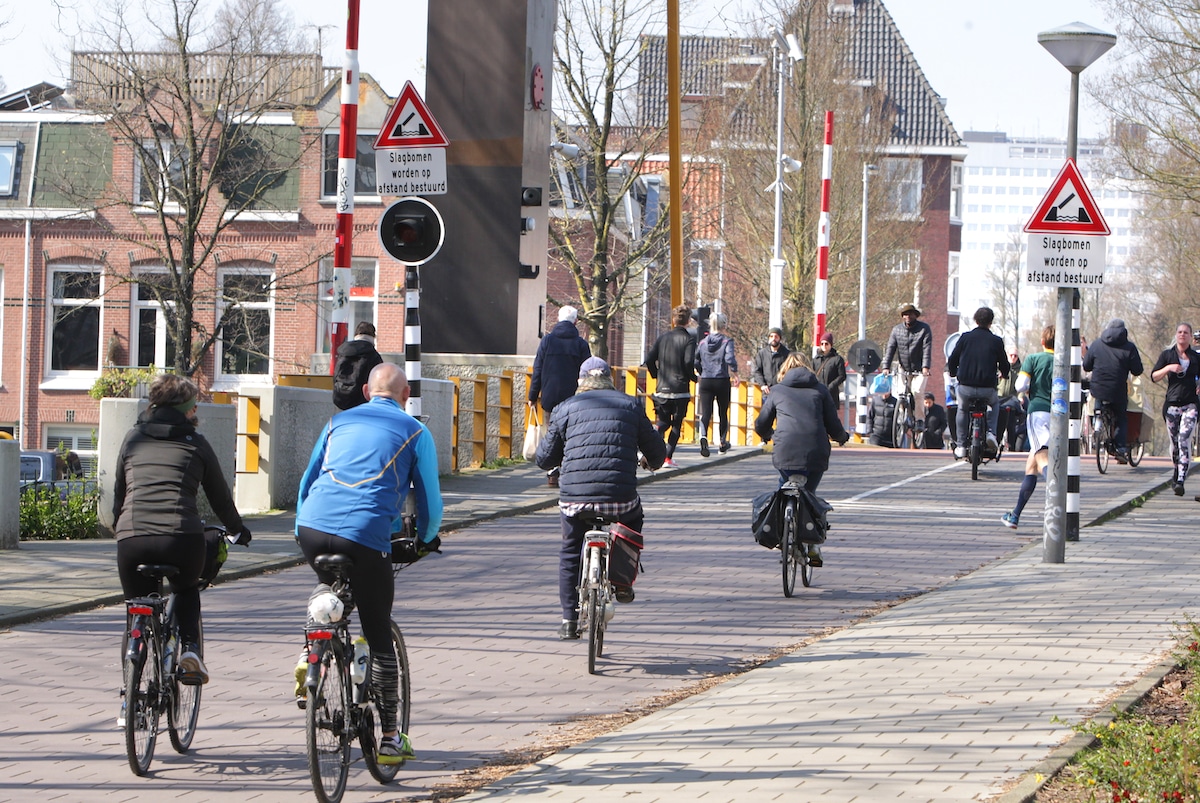Cycling Like the Dutch Would Reduce World’s Carbon Pollution More Than the Annual Emissions of Canada, Study Finds

 Why you can trust us
Why you can trust us
Founded in 2005 as an Ohio-based environmental newspaper, EcoWatch is a digital platform dedicated to publishing quality, science-based content on environmental issues, causes, and solutions.
In the Netherlands, cycling is a way of life and is so common that there are more bikes than people, according to BBC News. As many as 70 percent of journeys are by bike in cities like The Hague and Amsterdam.
Cycling can be a significant way to reduce a person’s carbon footprint, as using a bike instead of a car as little as once per day reduces an average person’s transportation emissions by 67 percent, according to University of Oxford researchers, reported Bloomberg.
An international research team has recently shown that almost 700 million metric tons of carbon pollution would be saved each year if everyone rode their bikes every day like the Dutch, Phys.org reported. That’s more than the annual emissions of Canada.
“The significant untapped climate and health benefits of increasing bicycle use suggest an urgent need to promote sustainable bicycle use,” wrote the authors of the study, as reported by Euronews Green.
Transportation is currently responsible for one quarter of greenhouse gas emissions, with passenger vehicles responsible for half, Phys.org reported. Transportation needs worldwide are projected to increase threefold by 2050.
As the world moves toward decarbonizing transportation, we know that 6.75 million electric vehicles were sold last year because sales of vehicles are recorded and published annually. But calculating the manufacture and ownership of bicycles, a form of low-emissions transportation that originated in the Georgian era, has been more difficult.
The research team has put together the first worldwide dataset of bicycle use and ownership categorized by country. The data goes back to the early 1960s, and the team used statistical modeling to make up for any missing details.
The findings of the study, “Historical patterns and sustainability implications of worldwide bicycle ownership and use,” were published in the journal Communications Earth & Environment.
The researchers found that global bicycle production exceeded that of automobiles from 1962 to 2015. In 2015, more than 123 million bikes were manufactured, almost two-thirds of them in China, reported Phys.org.
The researchers demonstrated that upper- and middle-income countries tended to have more bicycle owners, but also had a higher percentage of car trips, which showed that just because a large proportion of people own bikes doesn’t automatically mean they use them.
Only five percent of journeys in the 60 countries in the dataset were made by bicycle.
Bikes weren’t readily available in a number of countries, while in others like the U.S. many people owned bikes, but saw riding them less as a form of transportation than a recreational pastime.
“A worldwide pro-bicycle policy and infrastructure development enabled modal shift like the Netherlands and Denmark can lead to significant untapped climate and health benefits,” wrote the study’s authors, as Phys.org reported.
Following the example of the Netherlands and Denmark and making cities more amenable to bikes is essential to encouraging bicycle use and culture.
The authors said there was “an urgent need to promote sustainable bicycle use via supporting policy, planning, and infrastructure development,” reported Phys.org.
Professor Gang Liu of the Department of Green Technology at the University of Southern Denmark, who was lead author of the study, said the findings demonstrated that bikes will be key in reducing the world’s carbon emissions from transportation.
“Addressing such gigantic challenges requires not only technology-side strategies, such as lightweight design or electrification,” Liu told Agence France-Presse, as Phys.org reported, “but also needs demand-side strategies, such as alternative mobility patterns — sharing mobility, on-demand mobility, and ride sharing — and transport mode change, such as reducing short-distance car use by cycling.”
Subscribe to get exclusive updates in our daily newsletter!
By signing up, you agree to the Terms of Use and Privacy Policy & to receive electronic communications from EcoWatch Media Group, which may include marketing promotions, advertisements and sponsored content.

 233k
233k  41k
41k  Subscribe
Subscribe 




